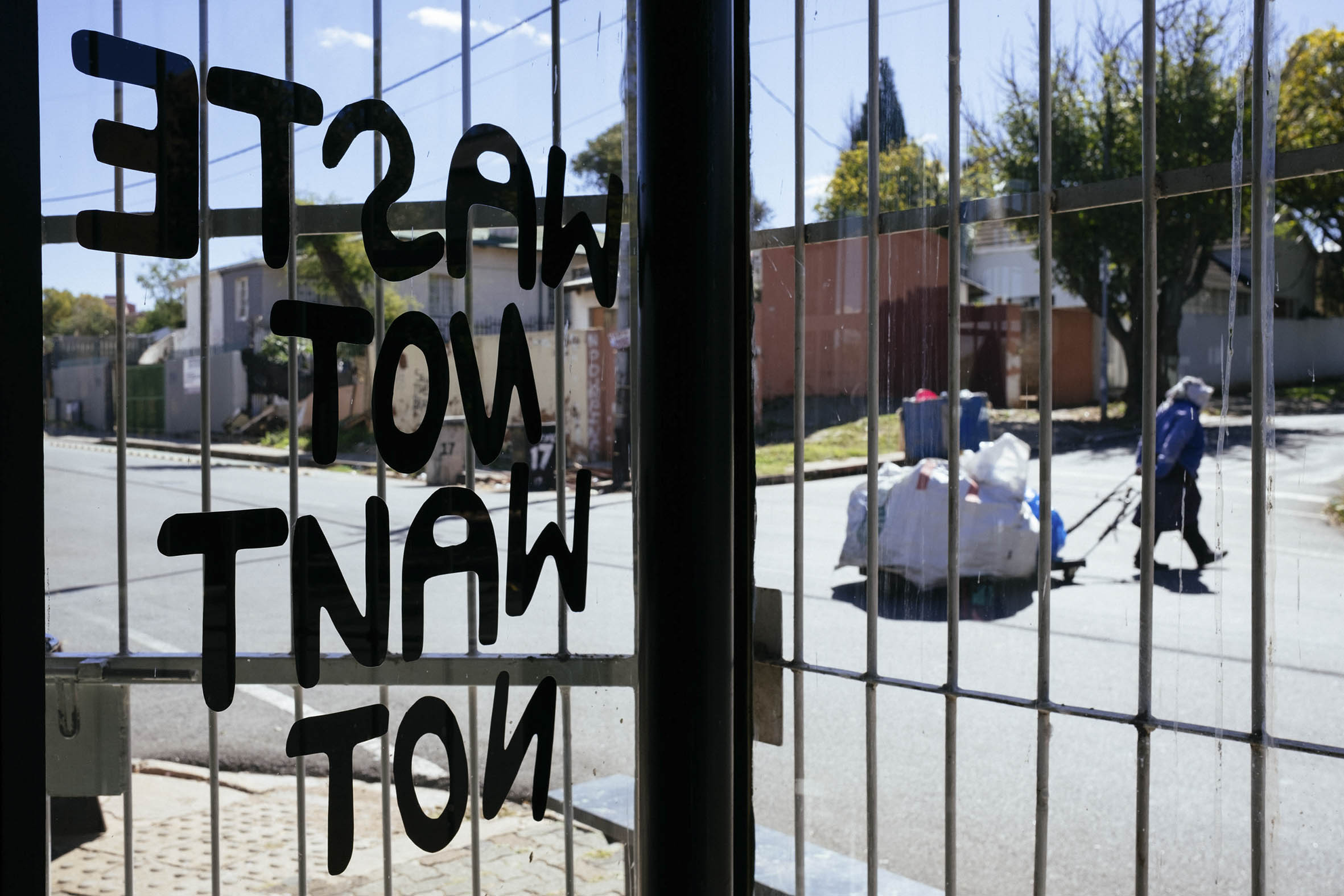Art transforms waste, space and people in Brixton
Waste Not Want Not, a new exhibition at Shade Artist Studio, tells the story of a street, a suburb and the powerful possibilities of space.
Author:
21 April 2022

The landmark Sentec Tower neatly pins the small mixed-income suburb of Brixton onto the continental watershed, which passes east-west through Braamfontein and continues through the East Rand towards eSwatini before veering south to the Drakensberg.
Caroline Street crosses the length of Brixton. It forms an east-west artery connecting traffic from Ontdekkers and Perth roads to Enoch Sontonga Avenue as it leads into Braamfontein.
In 2014, Caroline’s two lanes cozied up to make space for a cycle track. Seldom used for its intended purpose, this forms the main route for stacked reclaimer trolleys. Their owners service suburbs to the west and north. As Caroline’s re-cycle lane leads out of Brixton, it slopes downhill for the final free ride en route to multiple buyback centres in the inner city.
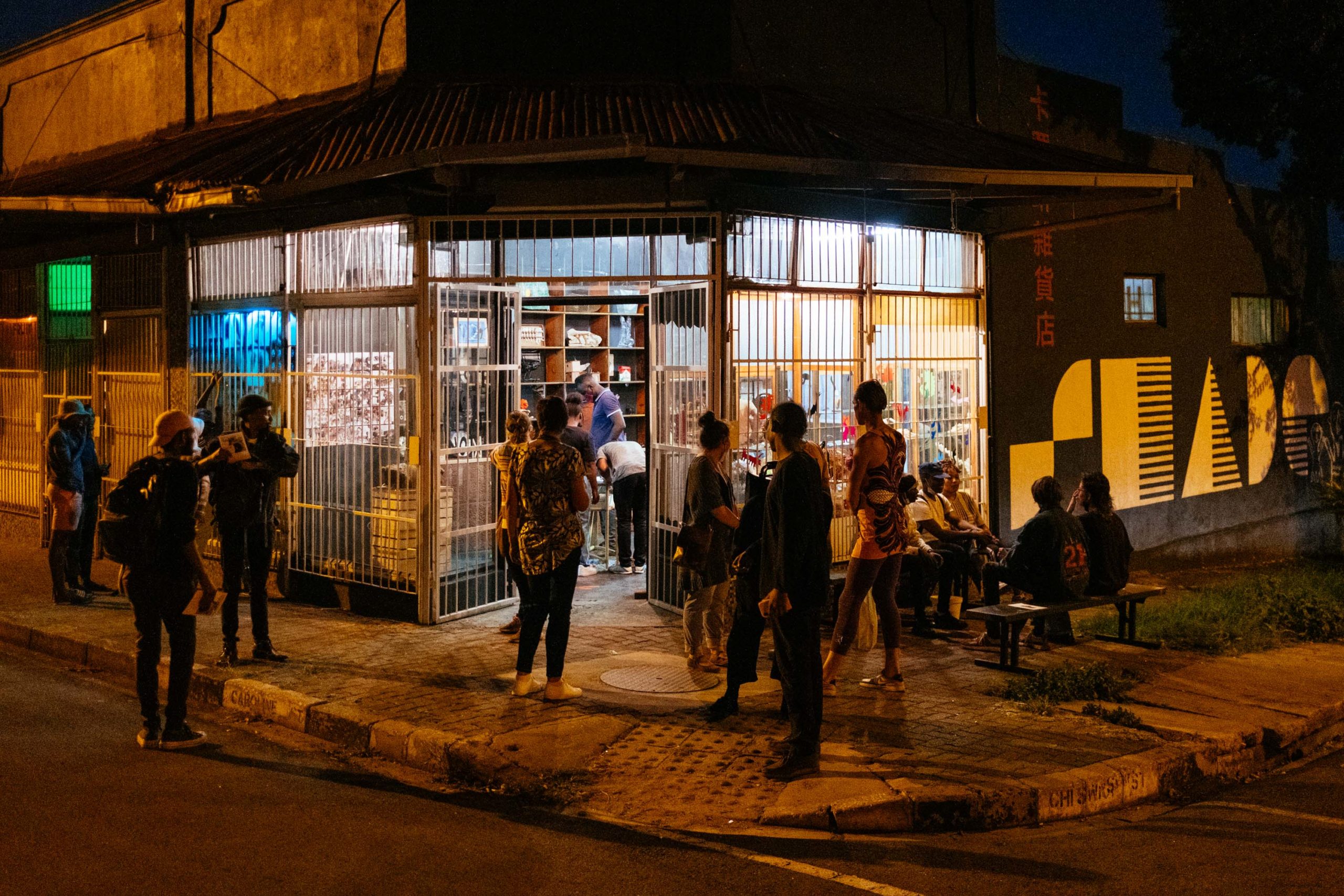
Brixton’s most coveted cultural institutions Roving Bantu Kitchen and Zietsies buckled under the economic pressure of prolonged lockdown regulations. Shade, an artist studio and occasional gallery, managed to hold through. Unnoticed by traffic speeding through, it hugs the corner where Caroline intersects with Chiswick Street.
Shade has a rusty and warped overhang that wraps around the corner. It lends a homeless person shelter from the elements. Passersby, once regular customers of the erstwhile corner shop, notice strangely familiar objects in the burglar-barred shop front. A fold-up blackboard reads “open”. It draws the suburb’s everyday public as well as the adventurous middle-class visitors who stroll one block down from the popular Breezeblock Cafe into an eccentric exhibition.
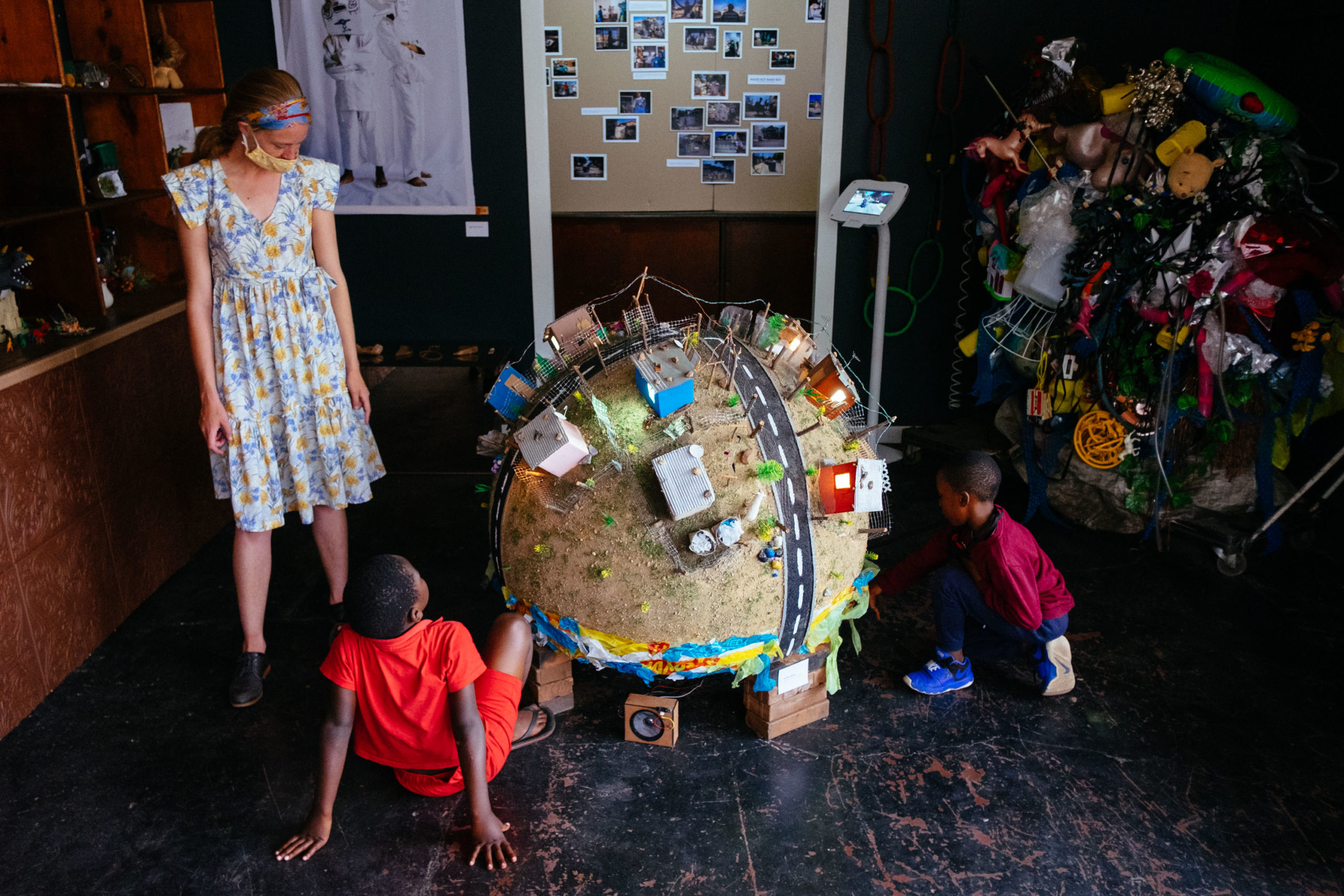
The colours and textures of waste
Inspired by waste sorting, resident artists Tinyiko Mkwakwa, Natalie Paneng, Mveliso Ntaba, Mpho Makutu, Francois Knoetze, along with Limb, the Brixton Photo Collective and Shade Youth Programme have used the rich colours and textures of waste. Discarded plastic toys dominate the display in the original shelves of the former shop. In a second gallery room, the artists have assembled and juxtaposed wigs, gloves, tape cassette film, wire, bubble wrap, foam rubber, wrapping paper, till slips, plastic bags, extractor pipes and more into playful installations, wall hangings, sculptures, collages, masks and costumes.
This show is as much about art as it is, implicitly, about Brixton’s position in the highly organised waste flows of Johannesburg. The plastic pipe and soft Kreepy Krauly fins of a swimming pool cleaner in one of the artworks speaks to the waste produced in high-consumption suburbs and intercepted in Brixton.
Over the past two years, reclaimers have come to know the types of materials that Shade absorbs into its carefully categorised waste material library. Street artists responding to a social media call out from Shade in turn have spray painted reclaimers’ trolley bags, contributing to their recognition and acceptance by the waste-producing neighbourhoods that they comb for their hard-won livelihood.
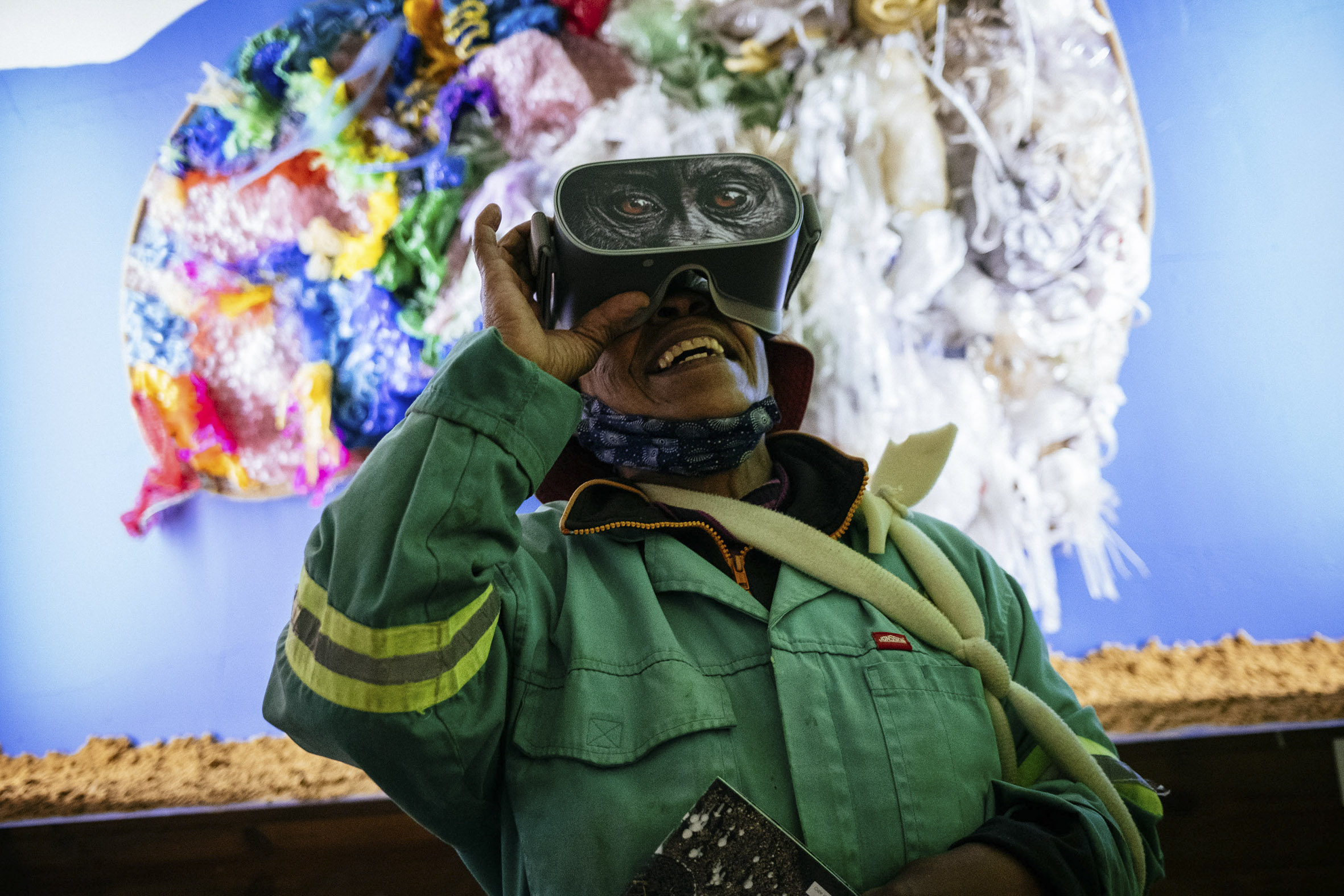
The art on display in the Waste Not Want Not exhibition until 24 April involves experienced artists as well as a group of Brixton children. Photographs and videos capture the children’s art and their masked and costumed performances.
When Shade opened in 2019, curiosity brought children from overcrowded tenant homes in the rougher parts of Brixton into the studio. Spontaneously, a Saturday morning art class evolved with activities ranging from waste upcycling to mural painting on public and private walls in Brixton and the occasional visit to a conventional art exhibition.
As Shade director and artist Tamzyn Botha explains, the children’s approach to waste is uninhibited, whereas the formally trained artists initially ask for waste to perform like conventional art materials. Waste art has emerged as a new art form in its own right, not only in Brixton.
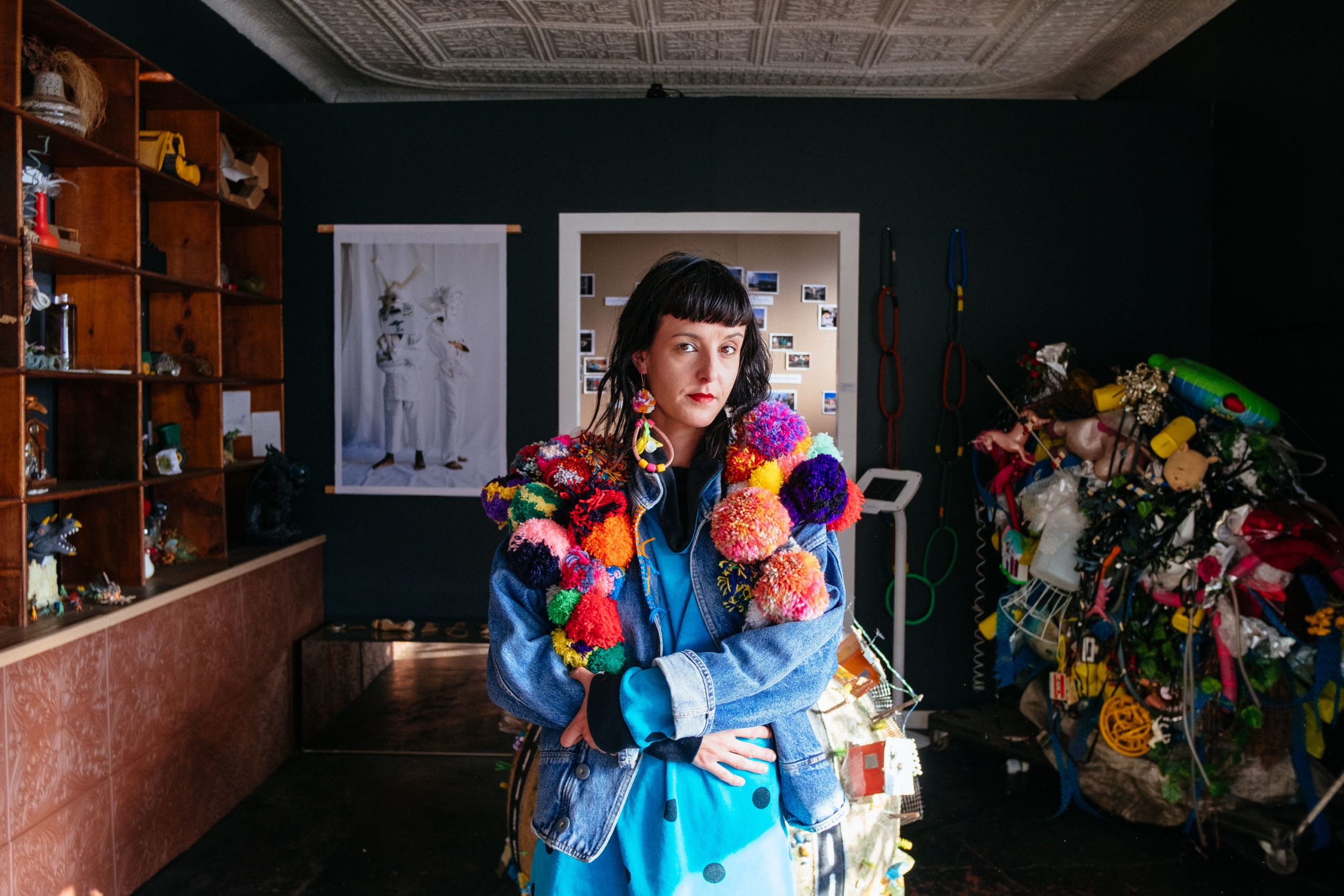
The story of a street
But above all, the Waste Not Want Not show is about the street intersection that Shade occupies. Under the gaze of a municipal closed circuit television camera, the crumbling pavement diagonally across from Shade attracts dumping on a weekly basis. Graffiti codes signal illicit activities in a hijacked yard.
The other two corners consist of historic Brixton properties converted into rental accommodation. One is behind palisades and is neatly kept for students, above it the imposing Sentec Tower. The other is grey, windowless and bulging.
On a podium in the exhibit, two 360 degree virtual reality headsets catapult the viewer back onto this very street corner. Cardboard creations emerge from the rubbish dump and begin a dance. An outlandishly ornate figure approaches in the street. Children in the costumes displayed in the exhibit skate about the intersection.
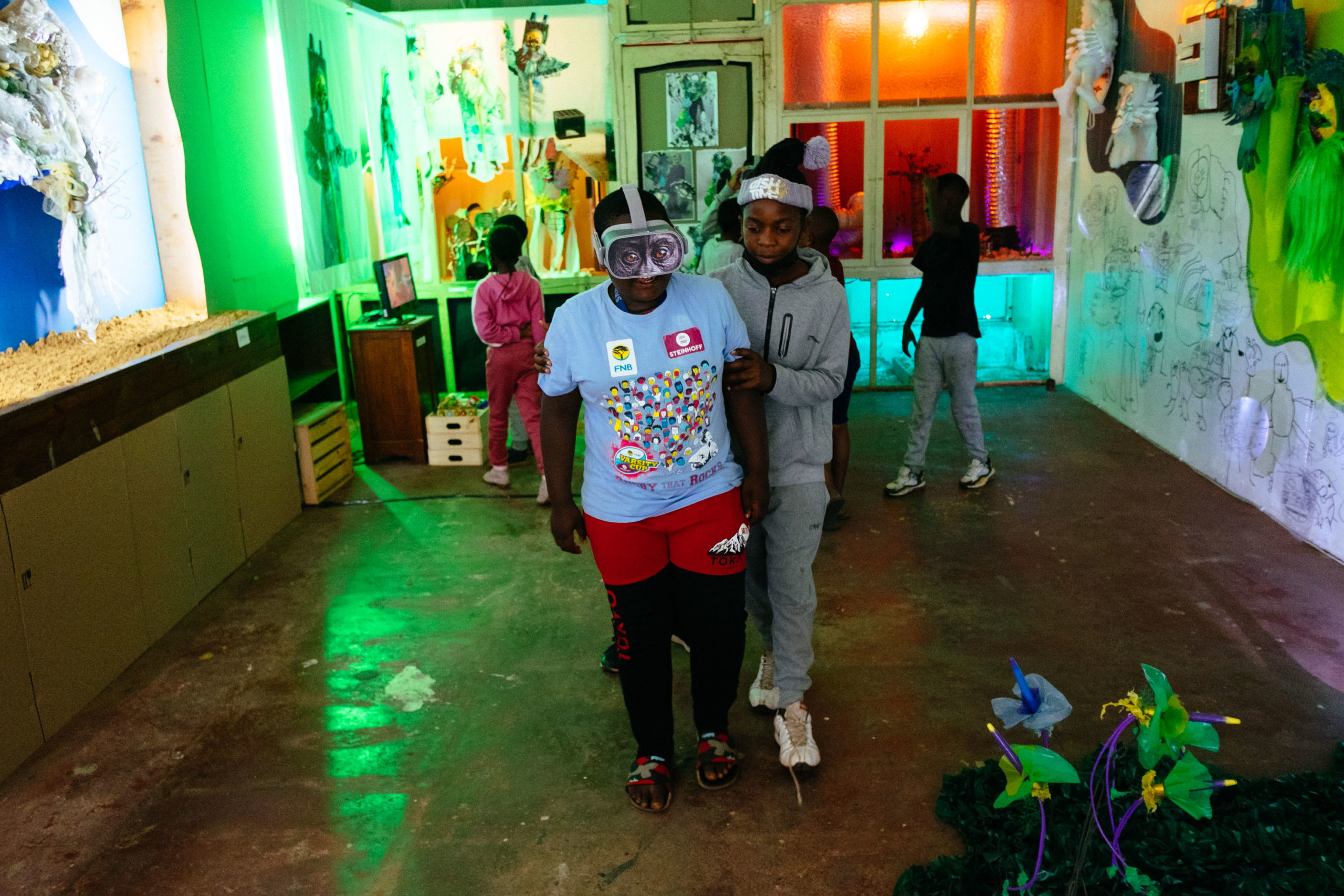
An oversized crocodile peers over the horizon, as do multiple Sentec Towers. Shacks pop up and dance above the houses. Dinosaurs creep out from behind recycling trolley bags. Hot air balloons and a parrot float in the air. With fantasy figures descending onto and circling around the intersection from all directions, we witness an ever-more spectacular transformation of ordinary space.
With this medium, Knoetze connects past with future, reality with imagination. He plays with and transcends the physical environment, instilling in each viewer a world of fantastic possibilities. As the visitor steps out of Shade, and cars speed by, the ordinary man pushing his detergent trolley-shop along the cycle lane and the bundle of blankets under Shade’s overhang become part of a magical world.
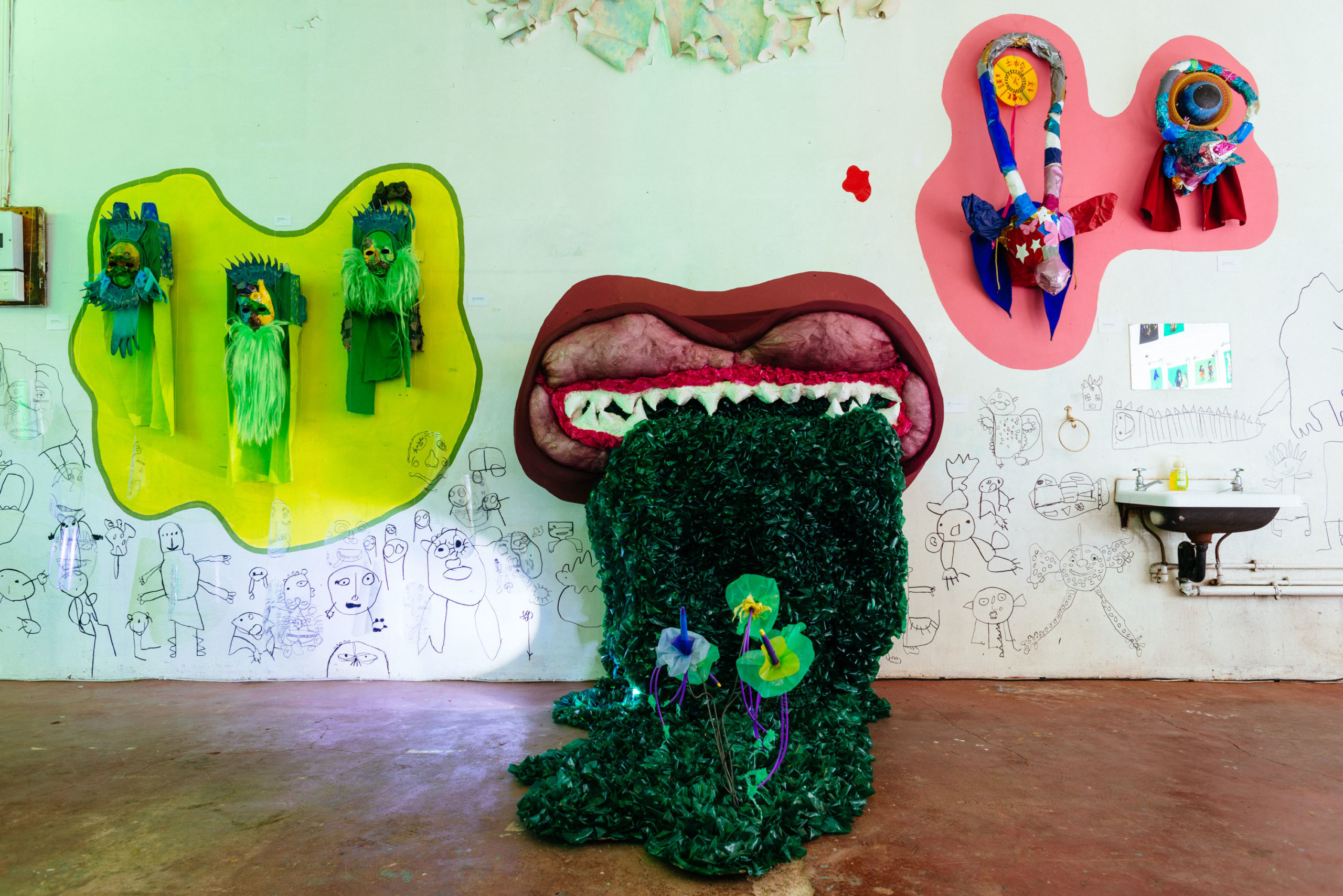
Thinking through the messages
Is this just a game or does Shade’s exhibition carry a deeper message? Can art transform the way we value not only the consumables we discard when their original purpose has expired, but also the way we imagine and experience the city?
The 20th century French philosopher Henri Lefebvre theorised space in three aspects. One is space as used daily – perhaps by a person pushing their trolley in the cycle lane. Another is space as represented in the lines drawn and words used by architects, town planners, engineers and bureaucracies, which in turn have consequences in space. The cycle lane and seemingly dysfunctional closed circuit television camera resulted from such representations of space. The third aspect is in the minds and imaginations of the users of space, who attach meanings to it.
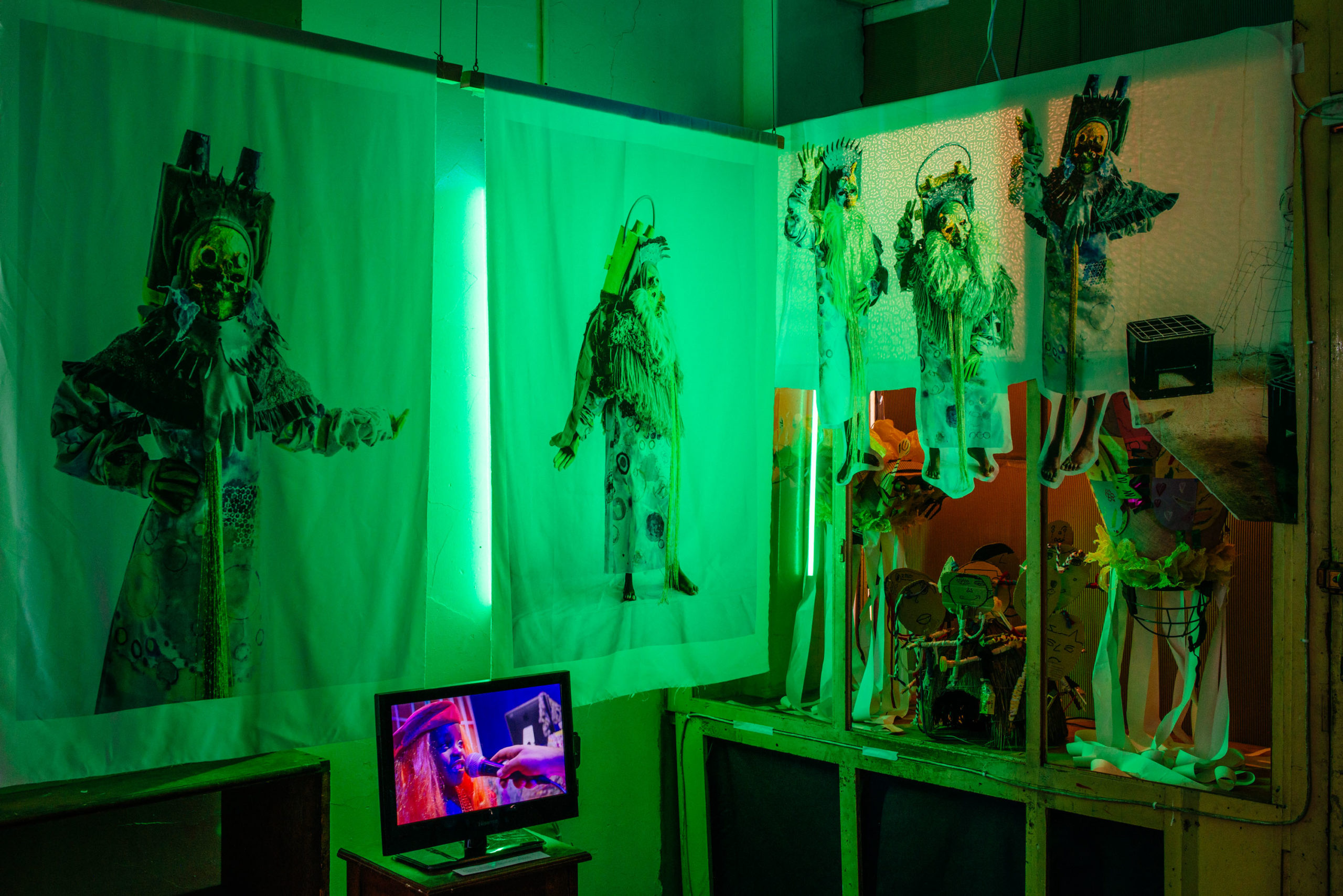
Waste Not Want Not powerfully projects onto this representational space. In doing so, it pushes back against the associations intended by the graffiti inscriptions on the wall of the hijacked yard, and against the disgust and outrage that street corner dumping instils among rate-paying residents like myself. Instead it brings to the foreground ideas about the multiple meanings, possibilities, futures and joys that street intersections, ordinary people and household waste hold.
The show runs daily from 11am to 4pm until Sunday 24 April.
